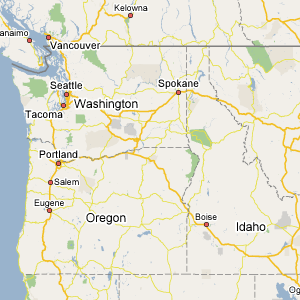Recent Publications
Recent publications based on WTU's collections, by Herbarium faculty, staff, Research Associates, Visiting Scholars and students.
Chen, S., K. Guan, Z. Xhou, R. G. Olmstead, and Q. Cronk. 2005. Molecular phylogeny of Incarvillea Juss. (Bignoniaceae) based on ITS and trnL-F sequences. Am. J. Bot. 92: 625-633.
Clarkson, J. J., S. Knapp, S. Aoki, V. F. Garcia, R. G. Olmstead,
and M. W. Chase. 2004. Phylogenetic relationships in Nicotiana (Solanaceae) inferred from multiple plastid DNA regions. Mol. Phylogen. Evol. 33: 75-90.
Giblin, D.E. 2004. Elaeagnus angustifolia
(Russian
olive). In: 100 worst invasive species in the Pacific
Northwest. Eds. D. Boersma, S. Reichard, A. Van Buren. (In
Press)
Giblin, D.E. 2004. Native plants to know and grow: Campanula rotundifolia (harebell). Douglasia 28(1): 2.
Giblin, D.E. 2004. Recent activities at the University of Washington Herbarium. Douglasia 28(1): 14-15.
Giblin, D.E. 2004. Pollination biology at Garden in the
Woods. Notes of the New England Wildflower Society 8(2):4-7.
Giblin, D.E. 2004. International efforts for native pollinator conservation. Douglasia 28(3).
Giblin, D. E., and R. G. Olmstead. 2004. Noteworthy
Collections: Scutellaria angustifolia ssp. micrantha. Madrono 51(4): 397-398.
Joneson, S., and K. Glew. 2004. Acroscyphus sphaerophoroides (Ascomycotina, Caliciaceae) found in Western Washington. Douglasia 28(2): 2-3.
Judd, W. S. and R. G. Olmstead. 2004. A survey of tricolpate (eudicot) diversity. Am. J. Bot., 91: 1627-1644.
Moylan, E., J. Bennett, M. Carine, R. G. Olmstead, and R. W.
Scotland. 2004. Phylogenetic relationships among
Strobilanthes s.l. (Acanthaceae): Evidence from ITS nrDNA, trnL-F
cpDNA, and morphology. Amer. J. Bot. 91: 724-735
Olmstead, R. G. and R. W. Scotland. Letter to the Editor of Taxon. A response to Lee’s paper in Taxon 54: 7-8.
Olmstead, R. G. 2004. Review of: “Plant Systematics:
A Phylogenetic Approach, 2nd Ed.” Syst. Biol. 53: 517-518.
Steane, D., R. de Kok, and R. G. Olmstead. 2004. Phylogenetic relationships of Huxleya and Kalaharia inferred from nuclear and chloroplast DNA sequence data. Mol. Phylogen. Evol. 32: 39-45.
Stefanovic, S. L. and R. G. Olmstead. 2004. Testing the phylogenetic position of a parasitic plant (Cuscuta,
Convolvulaceae, Asteridae): Bayesian inference and the Parametric
Bootstrap on data drawn from three genomes. Syst. Biol. 53:
384-399.
Trusty, J., R. G. Olmstead, D. J. Bogler, A. Santos-Guerra, and J.
Francisco-Ortega. 2004. Using molecular data to test a
biogeographic connection of the Macronesian genus Bystropogon (Lamiaceae) to the New World: a case of conflicting phylogenies. Syst. Bot. 29: 702-715.
Trusty, J. L., R. G. Olmstead, A. Santos-Guerra, S. Sa-Fontinha, and J.
Francisco-Ortega. Molecular phylogenetics of the
Macronesian endemic genus Bystropogon (Lamiaceae): paleo-islands, ecological shifts, and inter-island colonizations. Mol. Ecol. 14: 1177-1189.
Wolf, P. G., K. G. Karol, D. F. Mandoli, J. Kuehl, K. Arumuganathan, M.
W. Ellis, B. D. Mishler, D. G. Kelch, R. G. Olmstead, and J. L.
Boore. 2005. The first complete chloroplast genome of a
lycophyte: Huperzia lucidula (Lycopodiaceae). Gene 350: 117-128.
Zika, P. F. 2004. A noteworthy collection from California. Madrono 51: 395.
Zika, P. F. 2004. Noteworthy collections from Oregon and Washington. Madrono 51: 395-397.


